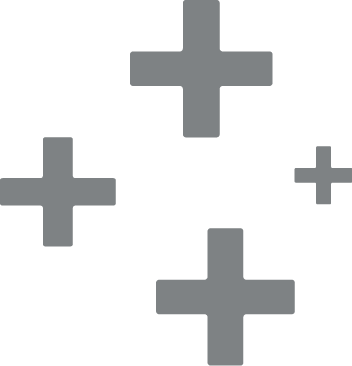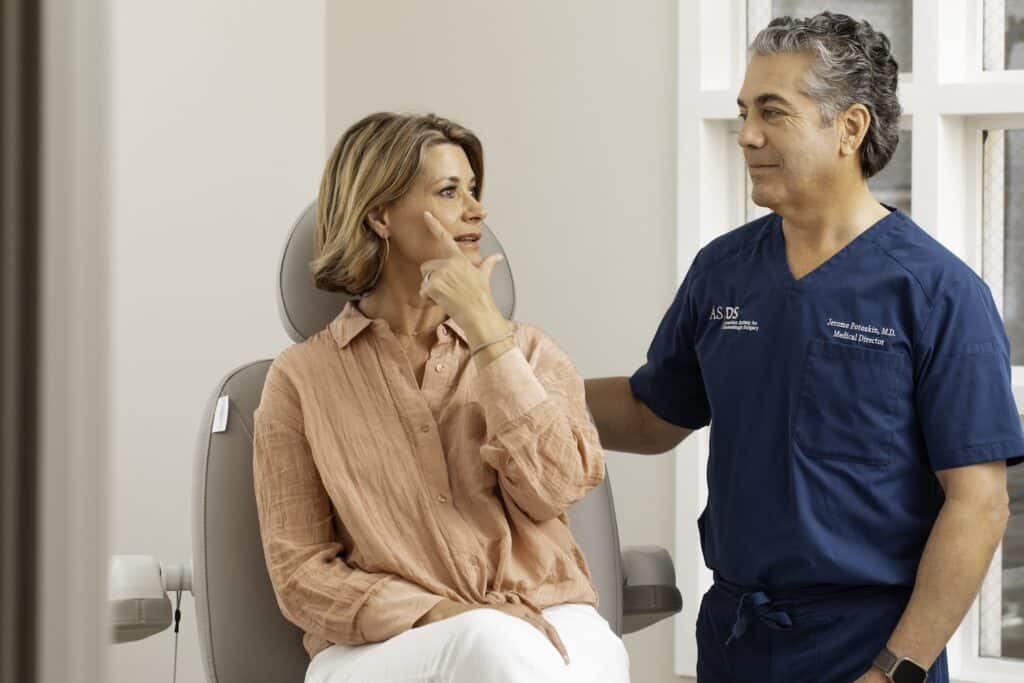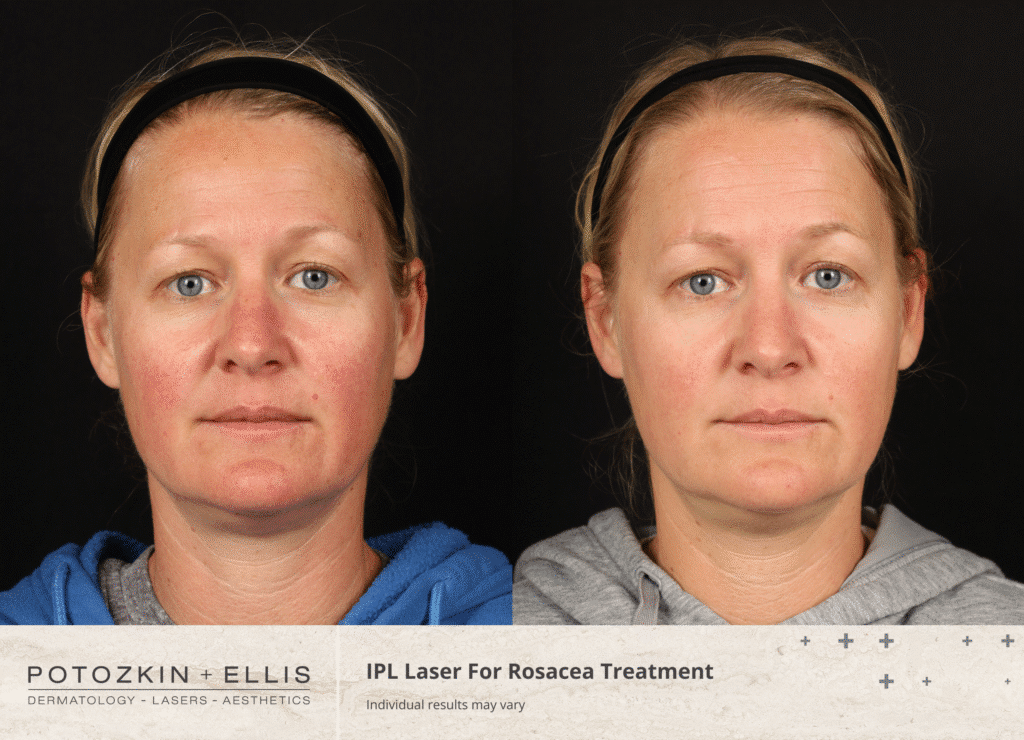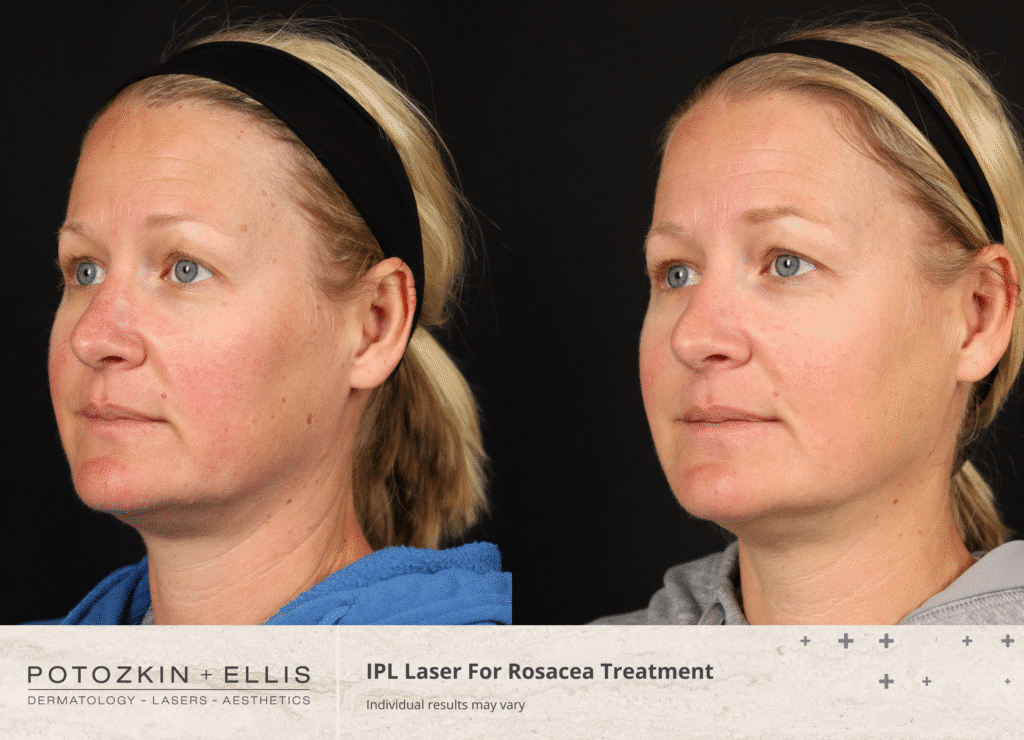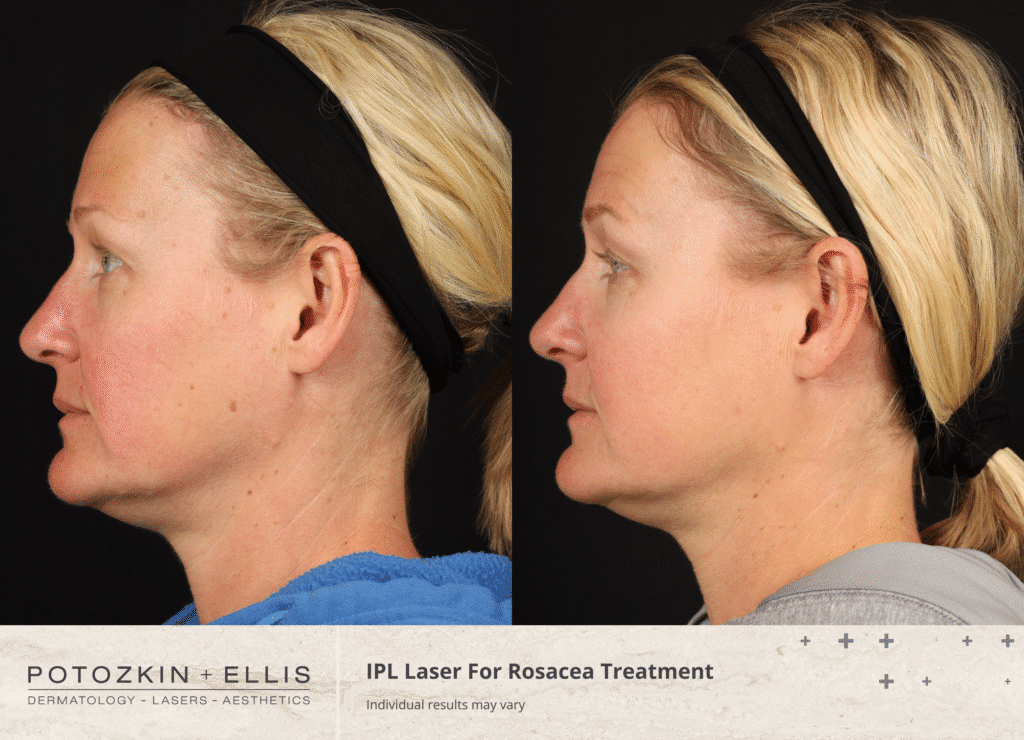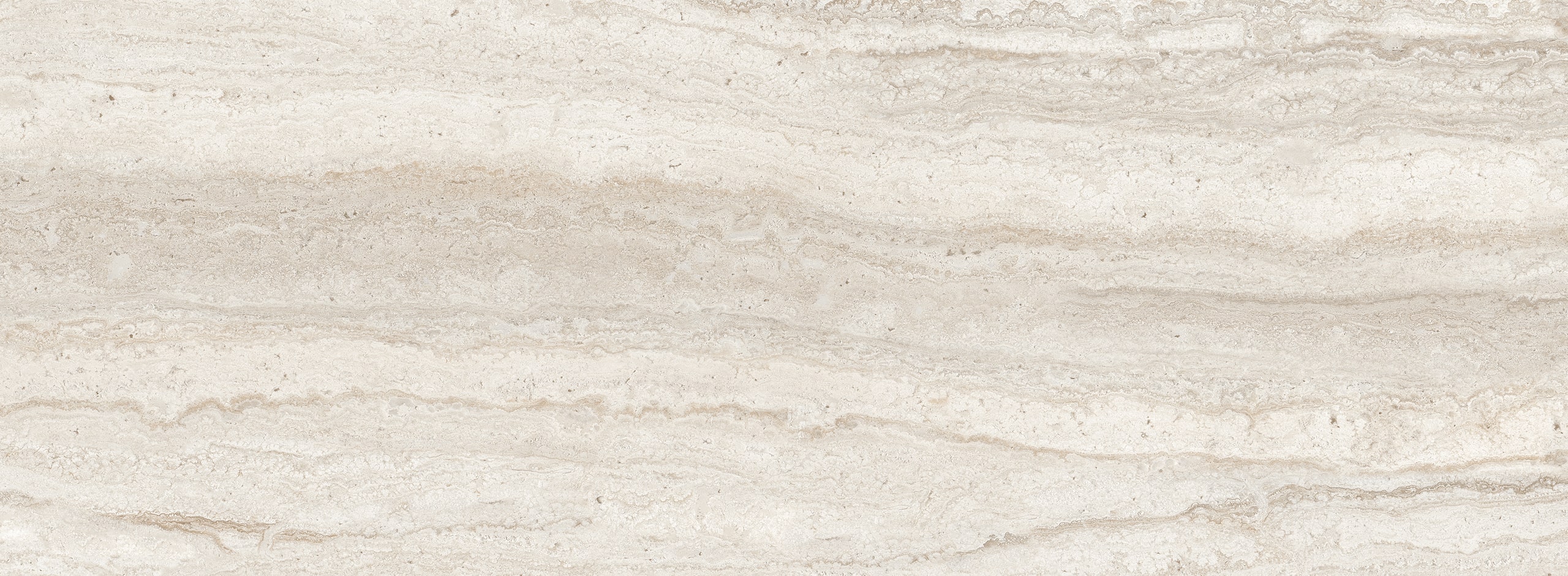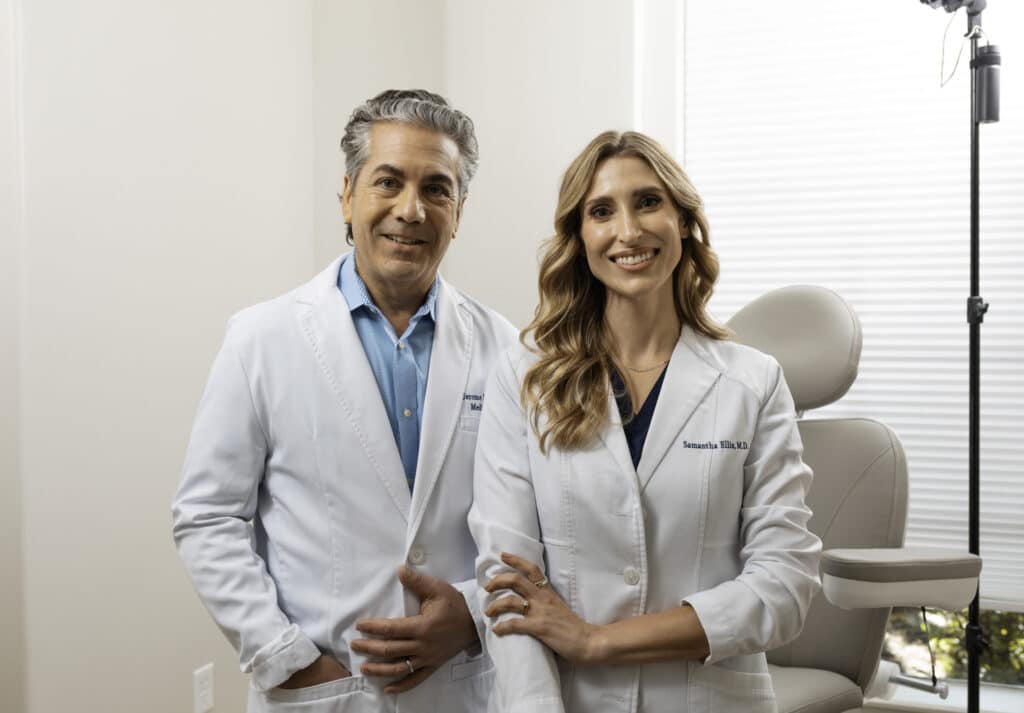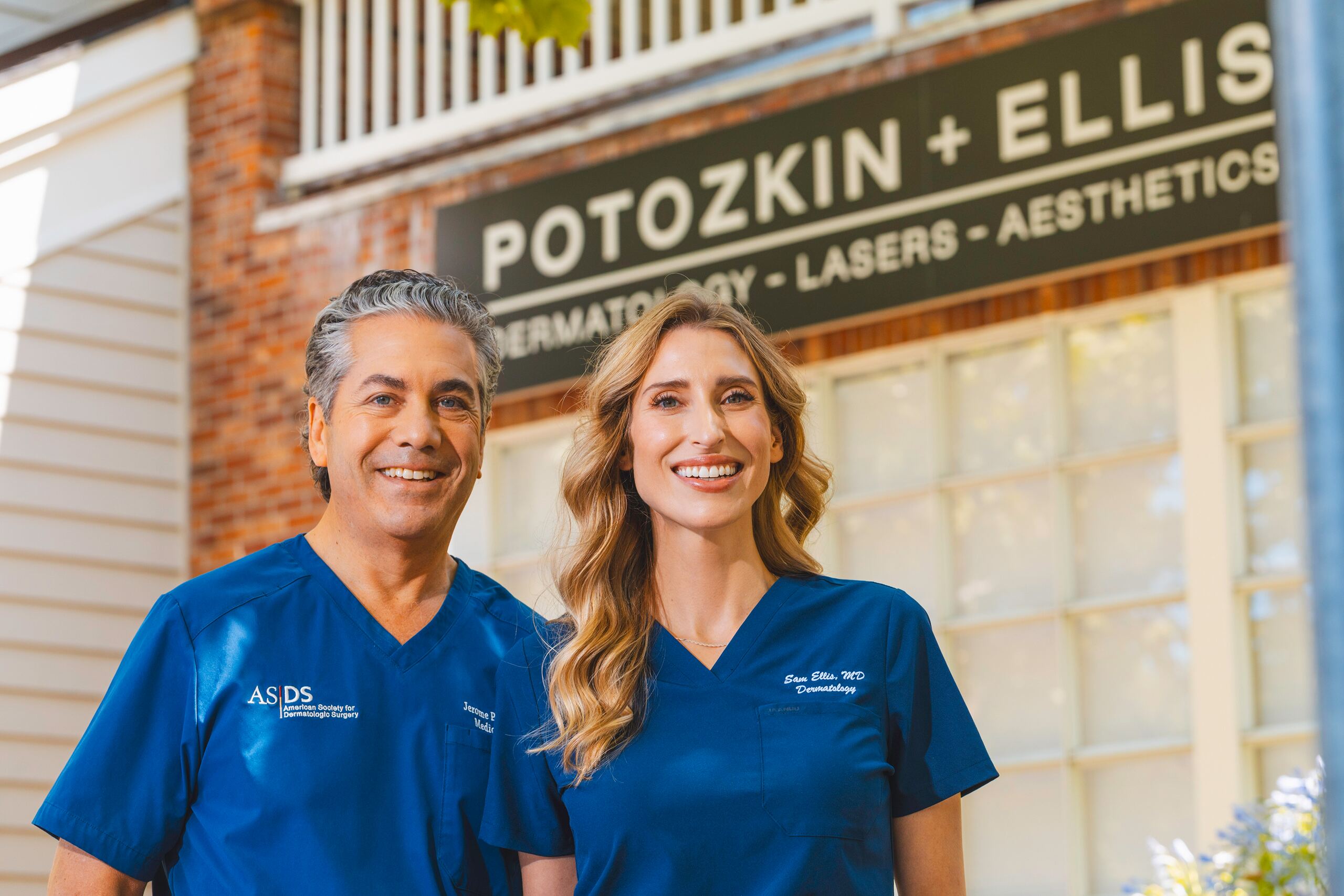What Is Rosacea?
Rosacea is a common chronic skin condition that varies greatly in severity from person to person. Most people who experience this condition will have noticeably flushed and blushed skin at the very least. Another common symptom involves blood vessels becoming broken and showing more prominently in the face. Sometimes rosacea becomes more severe and produces small, pus-filled red bumps on the face, commonly mistaken for acne or other skin issues. If you experience persistent facial redness, visible blood vessels, or recurring bumps on your face, professional dermatological evaluation can help determine if you have rosacea and develop an effective treatment strategy.
The condition usually starts between the ages of 30 and 60, and while the cause of rosacea remains largely unknown, it could be due to an overactive immune system. Though there is no cure for rosacea, treatment methods can help control and reduce the symptoms and appearance of this condition. Rosacea can affect anyone, but it is most common in middle-aged white women.
Common symptoms and effects of rosacea include:
- Persistent facial redness and flushing
- Visible broken blood vessels
- Inflammatory bumps and pustules
- Burning sensation in the central facial area
- Hot, tender-to-touch skin during flares
- Eye irritation and ocular symptoms
- Skin thickening, particularly on the nose
Unlike some other skin conditions, it’s difficult for someone experiencing rosacea to determine what causes flare-ups or when flare-ups will occur.
















